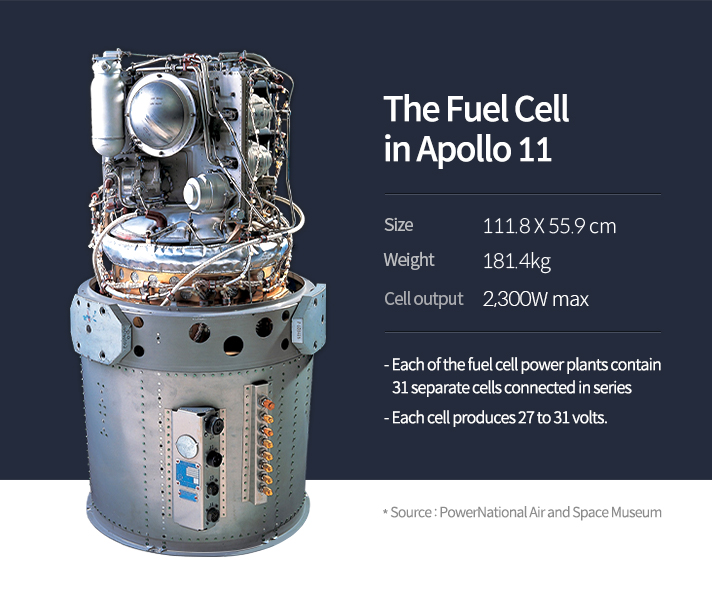



Hydrogen, Clean Mobility Technology to Save the Blue Earthrise
For mankind, the moon rising higher into the deep dark night sky was a mystery. It was the one that connects the Earth and the universe with its silvery light, and it was a divine being that affected our daily lives. The Moon was the wonder of us: how far is that moon? Is anyone living there?

“That's one small step for man, one giant leap for mankind.” - Neil Armstrong
July 20, 1969. Mankind has finally set foot upon the moon. The men stepping on the moon was broadcast on TV, and everyone was able to see how the Moon actually looks like, which the world has long been curious about. Of course, there was no life or civilization as we had imagined. The land was so barren that no life could live at all. Still, lunar exploration has left its big mark on humanity. With the successful moon landing, we could start to believe that the universe is no longer just an unknown space, but something that can be pioneered. And this got to drive a continuing effort to overcome the challenge of space exploration.
Countless high-tech science and technology have been used to realize our dream of reaching the moon. Among them, hydrogen fuel cells have played a key role in helping astronauts for long periods of time in space, completely different from the Earth's environment.

A hydrogen fuel cell is a device that generates electricity through an electrochemical reaction between hydrogen and oxygen. In fact, the National Aeronautics and Space Administration (NASA), which had been conducting a lunar exploration project, prioritized nuclear fuel and rechargeable batteries as energy sources for their spacecraft. However, since nuclear fuel had a stability problem and secondary cells could not be charged in space, they eventually chose a hydrogen fuel cell. As a result, this has contributed to the success of NASA's moon landing faster than its competitors.
Apollo 11, the first to land on the moon, housed three hydrogen fuel cells. Apollo 11's hydrogen fuel cell, capable of producing up to 2,300W per unit, generated electricity to operate countless devices in spacecraft, and the power generation provided most of the water for astronauts' needs.
Hydrogen fuel cells were more suitable than other energy sources in space because they were able to produce electricity, water, and oxygen as needed by promoting resource circulation. With the hydrogen stocked before leaving for space and the solar panels on the spacecraft generating electricity, any necessary elements could be directly produced in the spacecraft anywhere in space.
For example, simply injecting hydrogen and oxygen into a fuel cell could produce electricity and water if needed. and if the astronauts needed more oxygen or the fuel cell required more hydrogen, electricity produced by the fuel cell could break down water. In other words, spacecraft operations and astronauts have created a circulatory structure of necessary resources so that the finite amount of resources can be used efficiently.

The hydrogen fuel cell system, which has fulfilled humanity's dream of landing on the moon 40 years ago, is now set out to realize our dream once more now: hydrogen fuel cells have started to become more desirable as an energy source that can create an eco-friendly society.
The Earth is gradually losing its blue light due to greenhouse gases emitted by the reckless use of fossil fuels. Due to global warming, forests are turning into deserts, lakes are drying up, and glaciers are melting, contributing to global sea level rise. These abnormal climate changes caused by global warming are now threatening humanity as well.
Hydrogen fuel cell systems that use hydrogen as fuel only emit pure water while generating electrical energy. It is an energy system that can reduce the threat of greenhouse gases and global warming. In short, the eco-friendly energy source needed for the coexistence of the Earth and mankind is hydrogen.

To create an eco-friendly society that mankind has yearned for, Hyundai Motor Group started developing a hydrogen fuel cell electric vehicle (FCEV) using a hydrogen fuel cell system. As a result, in 2013, they introduced the world's first mass-produced FCEV equipped with a hydrogen fuel cell. And in 2018, they launched the FCEV NEXO equipped with an advanced hydrogen fuel cell system.
Hyundai Motor Group's effort did not stop there; it is also developing a variety of mobility using hydrogen fuel cells to build a sustainable mobility ecosystem. They established the world's first mass-production system for hydrogen-powered heavy-duty trucks, and they are continuing their research and development to implement hydrogen fuel cells in mobility such as vessels, railroads, and urban aviation mobility (UAM).

Earthrise - the first men first set foot upon the moon did not just witness the Moon. It was just as mesmerizing that the beautiful blue Earth ascended into the endlessly black and vast universe.
The hydrogen fuel cell system that led mankind to the moon has come back as a technology to protect the blue planet Earth, and once again realize the dream of mankind. The hydrogen fuel cell is a technology that will realize our dream, the coexistence of the earth and mankind; such as the mobility that doesn't emit greenhouse gases or power plants and factories without chimneys. Hyundai Motor Group is continuing its efforts to create an eco-friendly hydrogen society - so that humanity could stay impressed since they first saw the Earth rising in space.